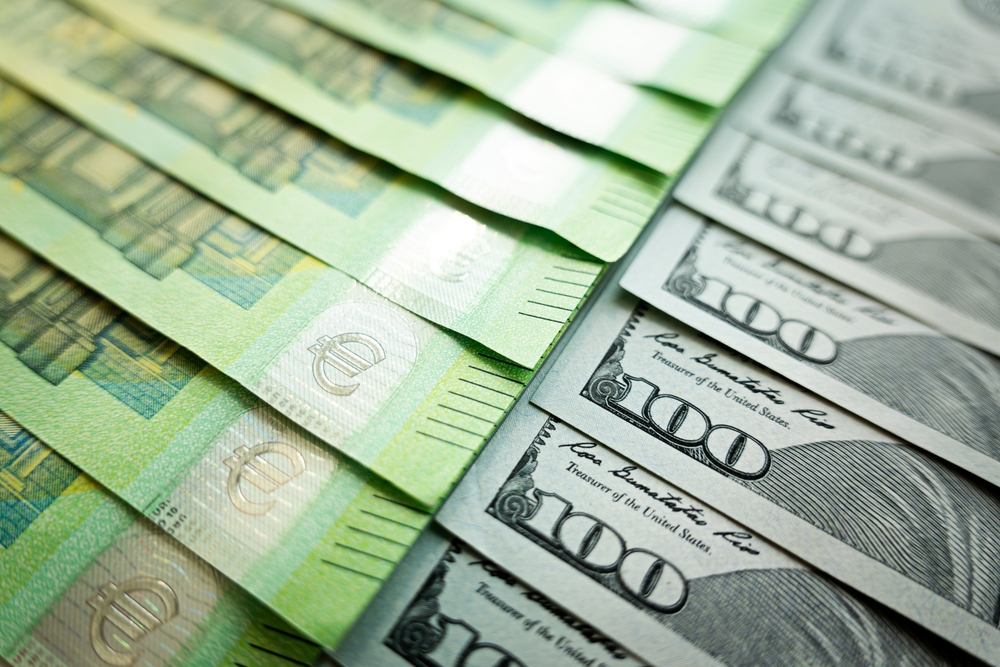
The euro enjoyed another positive week while the pound struggled amid poor data.
The pound fell against the euro and US dollar for the second consecutive week last time out, having been buffeted by weak data and shifting central bank expectations. American airstrikes on Iranian nuclear facilities over the weekend mean Monday begins with an air of genuine anxiety as currency markets await the next stage in a conflict some analysts fear is spiralling out of control.
June has proved a serious challenge for the pound. Since the beginning of the month, GBP/EUR has weakened by 2 cents. GBP/USD sits only just below its 1 June level but has ranged by almost 3 cents in that time, a testament to the volatile market mood.
Over the weekend, Donald Trump took the decision to assist Israel with “bunker buster” bombing raids in Iran. The president had previously given Iran a two-week window to strike a deal. The Iranian parliament immeditaely voted to close the Strait of Hormuz in response, through which a vast percentage of global oil tankers flow. The price of Brent crude oil hit a five-month high in volatile trading this morning.
It’s worth emphasising the startling fall in May’s UK retail sales figures again. Across the country, sales fell by 2.7% month-on-month – the steepest monthly drop since December 2023. That news came hot on the heels of Thursday’s interest rate decision from the Bank of England, and Andrew Bailey used the press announcement to highlight his concerns about the strength of the labour market.
Borrowing costs are clearly affecting consumers in other ways, too. The average annual percentage rate (APR) on British credit cards hit a record high of 35.7% in the past three months, according to spending tracker Moneyfacts UK. The average credit card debt per household is now estimated to sit above £2000.
We’re heading into a quieter period in terms of economics, but dynamics will once again be influenced by geopolitics. On that note, keep an eye out for this week’s NATO summit in The Hague, where delegates will certainly have plenty to discuss.
This morning sees the release of the S&P’s preliminary UK services and manufacturing report for June. German inflation data will arrive later this afternoon.
After last Thursday’s Juneteenth holiday, US markets will be greeted with a rather busier schedule. The pick of the bunch comes with the core PCE price index, a report often cited by the Fed in setting rates.
Make sure any upcoming transactions are protected against the risks of sudden market movements. Secure a fixed exchange rate now with a forward contract; call your account manager on 020 3918 7255 to get started.
GBP: Data dampens demand
The last few really significant British economic releases have been a drag on sterling. With GDP, employment and sales all seemingly moving in the wrong direction, the pound has struggled against its rivals as geopolitics and trade continue to lay an unstable foundation.
GBP/USD: the past year
EUR: A joyful June
While sterling has struggled, the euro has enjoyed a June to remember. Since 1 June, the euro has advanced by more than 1% against both the pound and the euro – a trend that comes despite low interest rates and in the absence of a trade deal with the United States.
GBP/EUR: the past year
USD: Waller calls for cuts
Federal Reserve governor Christopher Waller argued that the Fed should start cutting interest rates as early as July. According to Waller, the anticipated impact of tariffs on inflation hadn’t fed through into economic reality yet. Waller is a leading candidate to replace current chair Jerome Powell at the end of his term.
EUR/USD: the past year
For more on currencies and currency risk management strategies, please get in touch with your Smart Currency Business account manager on 020 7898 0500 or your Private Client Account Manager on 020 7898 0541.

 020 7898 0500
020 7898 0500